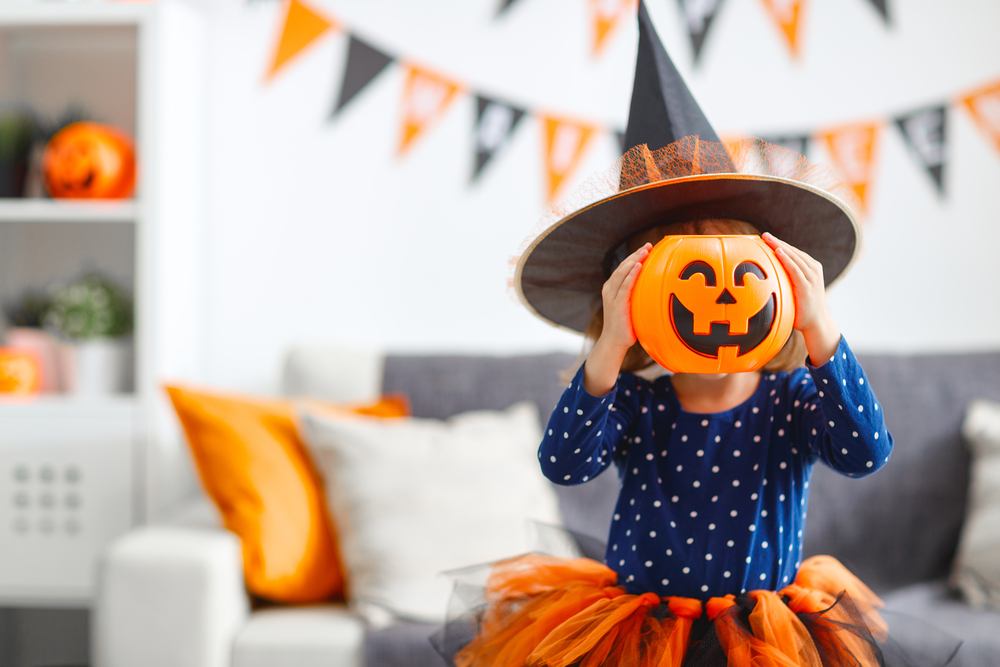Halloween is a season of excitement and imagination, a time when children of all ages eagerly don costumes and venture into the night for treats and tricks. But for parents of children with autism, this holiday can present unique challenges. At Solstice Behavioral Health & Consulting, we understand the importance of making Halloween enjoyable and safe for every child. In this guide, we’ll share valuable tips and strategies to help parents ensure a happy and memorable Halloween for their children with autism.
1. Choose a Comfortable Costume:
Selecting the right costume is crucial for a child with autism. Prioritize comfort preferences. Look for costumes made from soft materials and avoid masks that might feel restrictive. If your child has sensory sensitivities, consider creating a costume using familiar clothing items or soft accessories.
2. Practice Costume Familiarization:
Before Halloween night, introduce the costume to your child through play and dress-up sessions. Gradually increase the time they spend wearing it to help them become accustomed to the sensation. This practice can reduce anxiety and ensure that they feel comfortable and confident in their costume.
3. Plan a Low-Key Celebration:
Consider hosting a Halloween celebration at home or with a small group of close friends and family. This quieter environment can be less overwhelming for children with autism. You can still decorate, carve pumpkins, and enjoy Halloween-themed activities in a more relaxed setting.
4. Create a Visual Schedule:
Visual schedules and social stories can help children with autism understand the sequence of Halloween activities. Use pictures or symbols to outline the evening’s events, including dressing up, trick-or-treating, and returning home. This visual support can reduce anxiety and provide a clear structure for the night.
5. Prepare for Trick-or-Treating:
If your child will be trick-or-treating, prepare them for the experience. Walk through the route during daylight hours to familiarize them with the surroundings. Talk about the process of approaching houses, saying “trick-or-treat,” and receiving candy. Consider practicing these steps with a familiar neighbor or friend.
6. Choose a Familiar Route:
Opt for a trick-or-treating route in your neighborhood that your child is familiar with. This familiarity can provide a sense of comfort and predictability. If your child has specific sensitivities, note which houses offer sensory-friendly treats or experiences.
7. Sensory-Friendly Treats:
Some houses may offer sensory-friendly treats, such as glow sticks or stickers, instead of traditional candy. Discuss these options with neighbors in advance, and share your child’s preferences. This can ensure that your child receives treats they can enjoy.
8. Set Time Limits:
Halloween night can be overwhelming, and sensory overload is a possibility. To prevent exhaustion and meltdowns, set time limits for trick-or-treating. Clearly communicate when it’s time to return home, and be prepared to leave if your child becomes overwhelmed.
9. Practice Safety:
Safety is a top priority. Ensure that your child is visible by incorporating reflective tape or stickers onto their costume or using glow sticks. Carry identification with emergency contact information, and consider using a GPS tracking device if your child tends to wander.
10. Offer Alternative Activities:
If your child is uncomfortable with traditional Halloween activities, offer alternatives at home. You can engage in sensory-friendly activities like pumpkin carving, themed crafts, or a cozy Halloween movie night. The goal is to make Halloween enjoyable in a way that suits your child’s preferences and comfort level.
Halloween should be a time of joy and celebration for all children, including those with autism. By following these tips and adapting the holiday to your child’s needs, you can ensure a happy and safe Halloween experience. At Solstice Behavioral Health & Consulting, we support families in creating inclusive and enjoyable celebrations. Embrace the spirit of the season and make Halloween a memorable occasion that your child can look forward to with excitement and anticipation. For more information about autism or how Solstice BHC’s ABA Therapy program can help your child, visit our Shelton office or call us at 203-900-4720.


